Mexico City – Environment Design
Core Idea
Project Objectives
- Develop a modular city-building system using Unreal Engine’s Blueprint.
- Experiment with dynamic sunset lighting using Lumen for a realistic and immersive atmosphere.
- Optimize the scene to maintain high performance despite the dense urban environment.
Project Type: Personal / Conceptual and Technical Exploration
Role: Environment Artist | Technical Artist
Tools: Unreal Engine 5.2, Quixel Megascans, Blender
Duration: ~3 weeks
Focus: Atmospheric architectural design, nature/technology integration, spatial storytelling
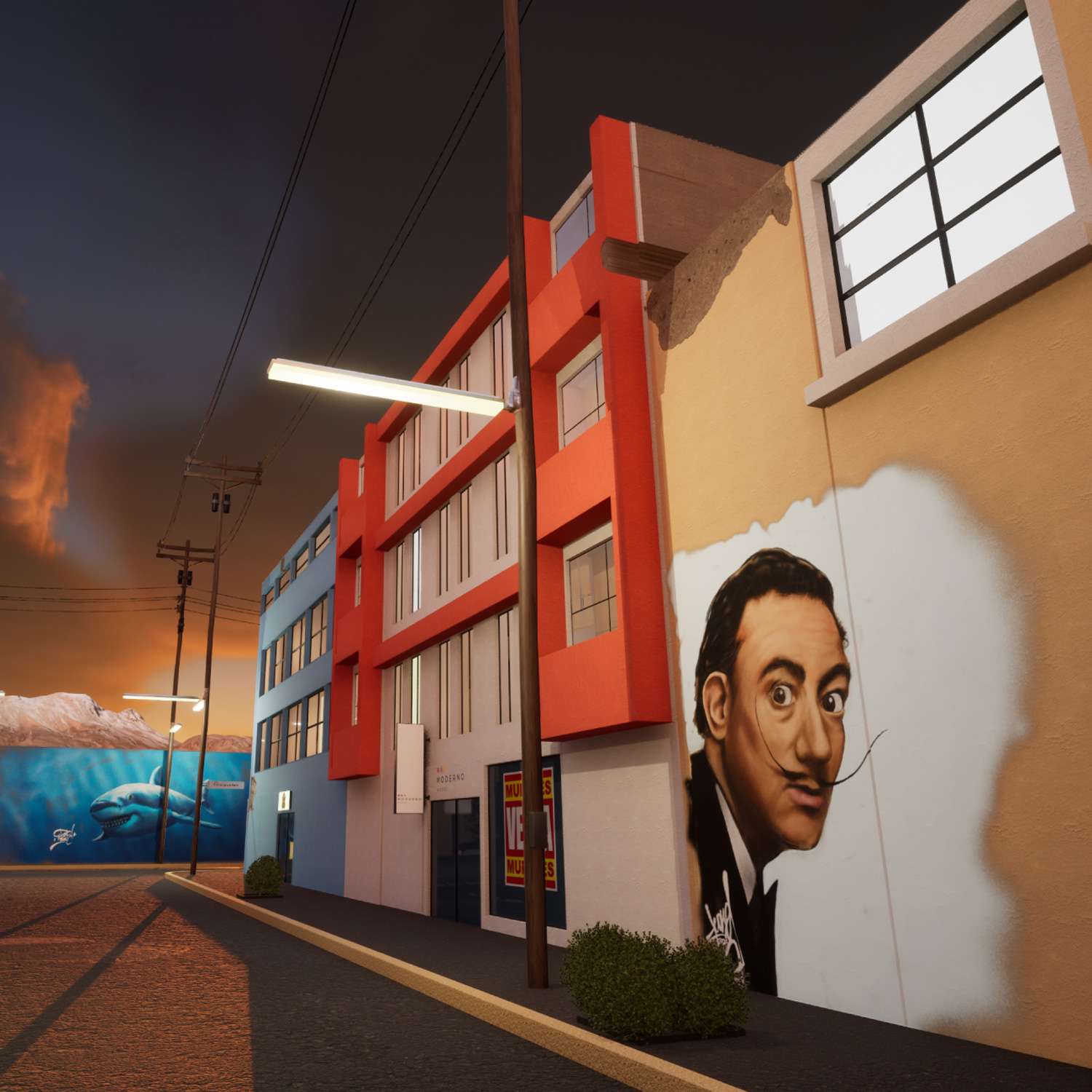
Inspiration and References
The project draws inspiration from photographs of Mexico City taken from real rooftops, as well as visual references from films like Roma (Cuarón). These sources helped establish an emotional tone for a vibrant yet serene urban landscape.
- Architecture: Latin American cities, particularly Mexico City, are known for their distinctive architectural style, featuring large windows and a mix of towering high-rises and low-rise buildings (typically up to four stories). These elements were incorporated to reflect the city’s unique character.
- Street Advertising: Local businesses often use hand-painted signs, fostering a sense of community. Despite the rise of large-format printing, hand-painted advertising has seen a resurgence, adding authenticity to the urban environment.
- Volcanoes: Mexico City’s identity is closely tied to its proximity to two major volcanoes, Popocatépetl and Iztaccíhuatl. In the level, I included a scanned model of Iztaccíhuatl in the distance, carefully positioned to create a realistic sense of scale and remoteness.
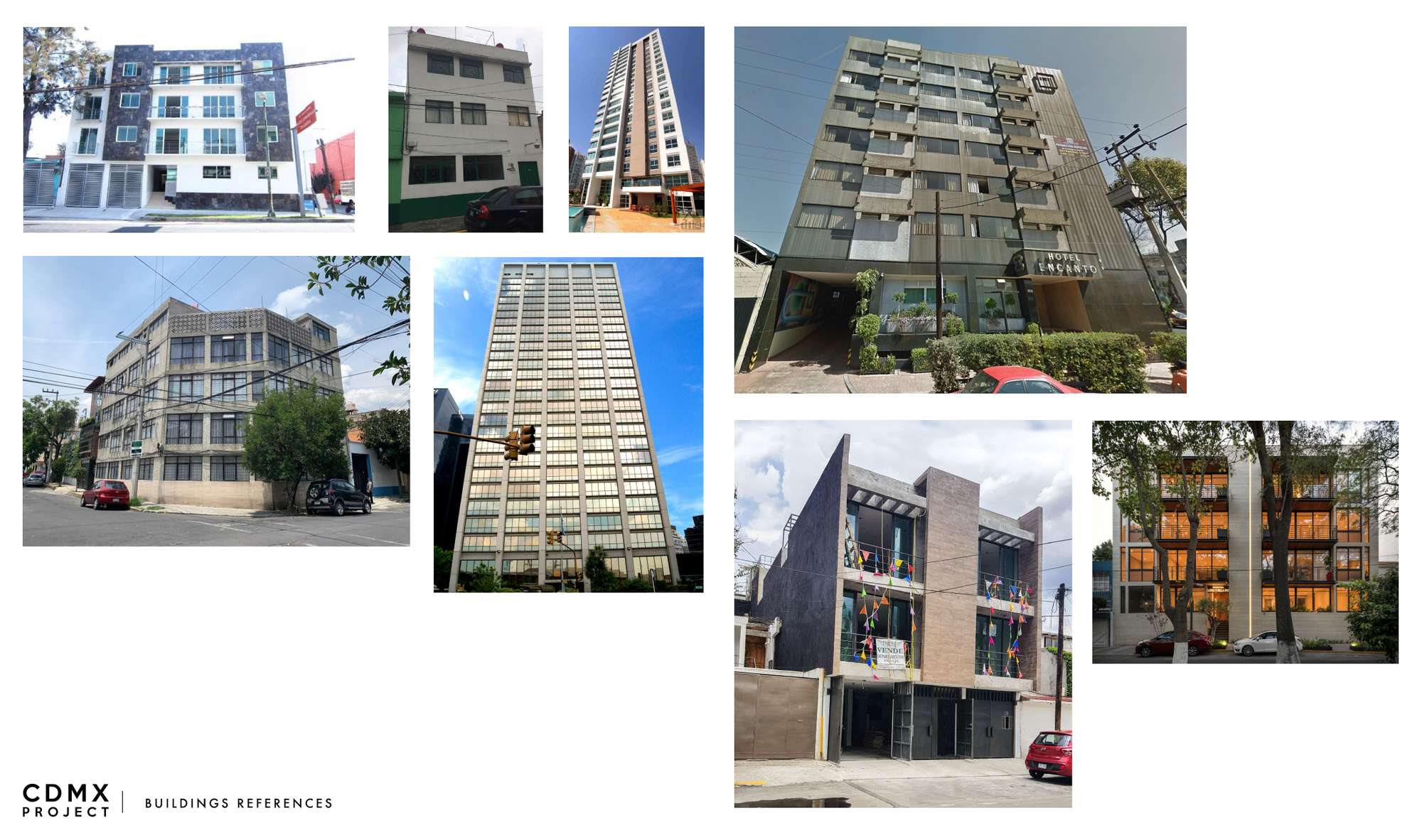
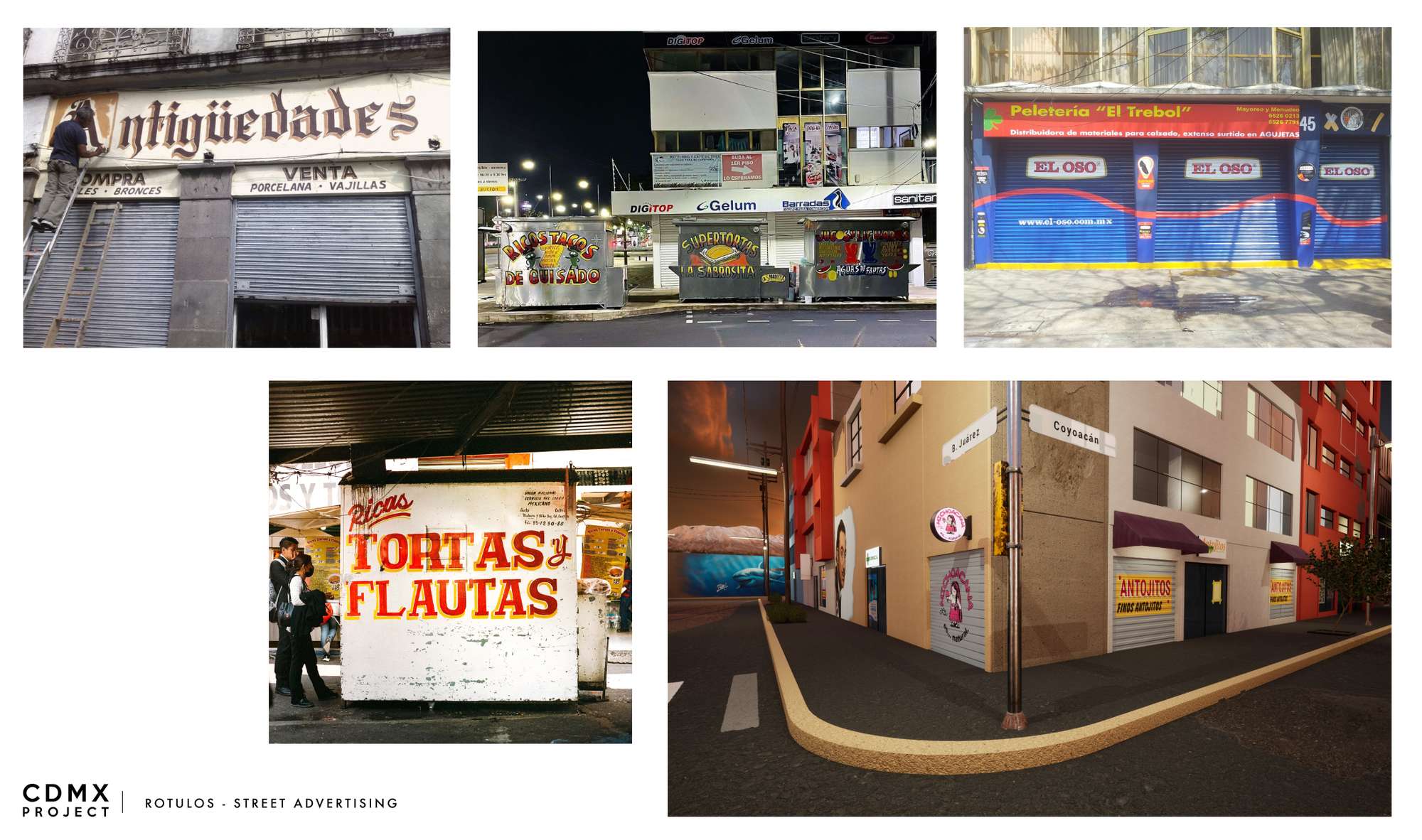
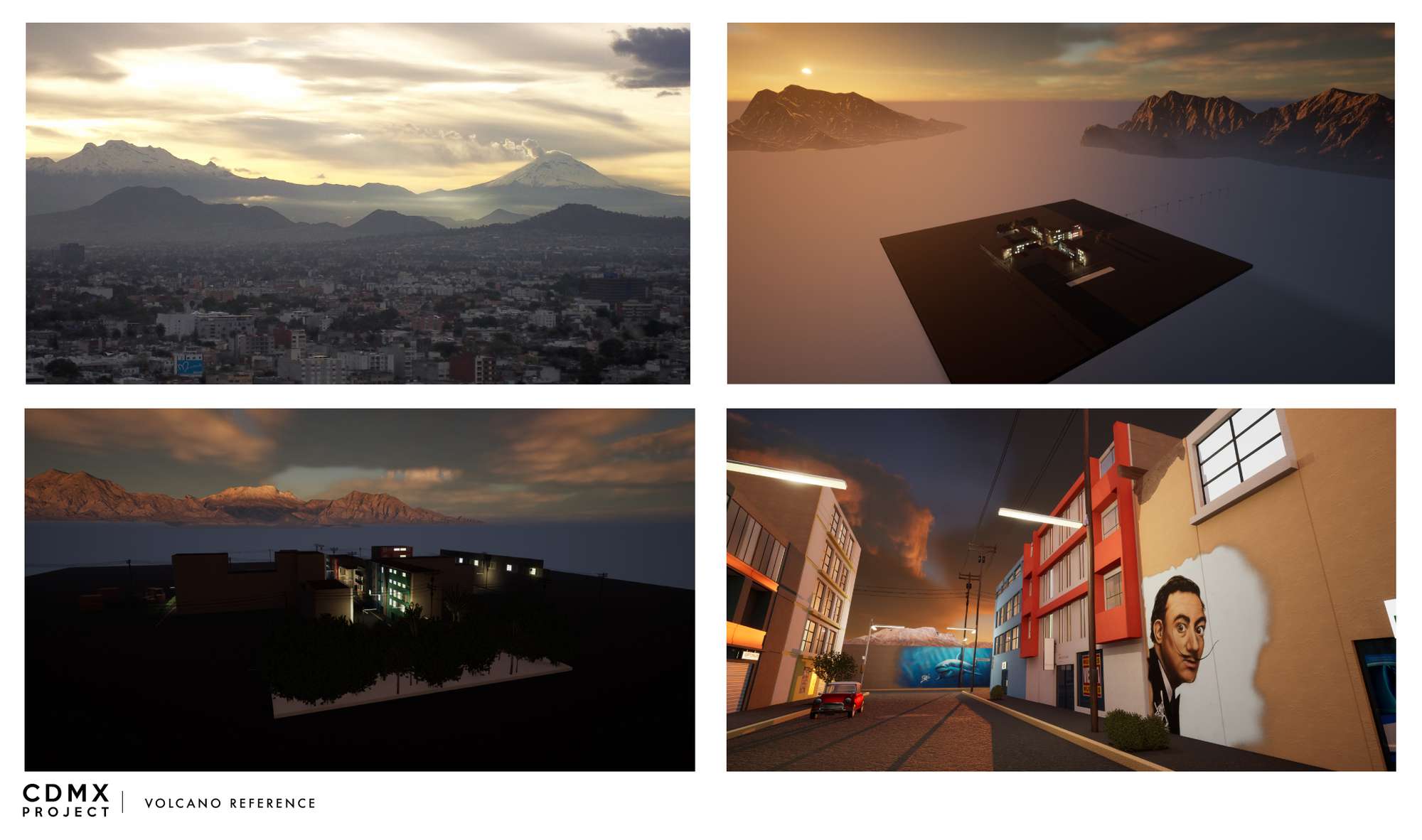
Technical Development
- Blueprint Constructor: I created a modular instantiation system that randomizes building placement while allowing control over variations (height, materials, and details), the procedural system ensures varied yet cohesive urban layouts, balancing realism and optimization.
- Modularity: Buildings are composed of reusable components (walls, windows, roofs, stairs) to streamline development and ensure flexibility.
- Instancing: Static instances were used to reduce draw calls and improve performance.
- Vertex Painting: Applied to roofs and walls to add visual variety without overloading textures.
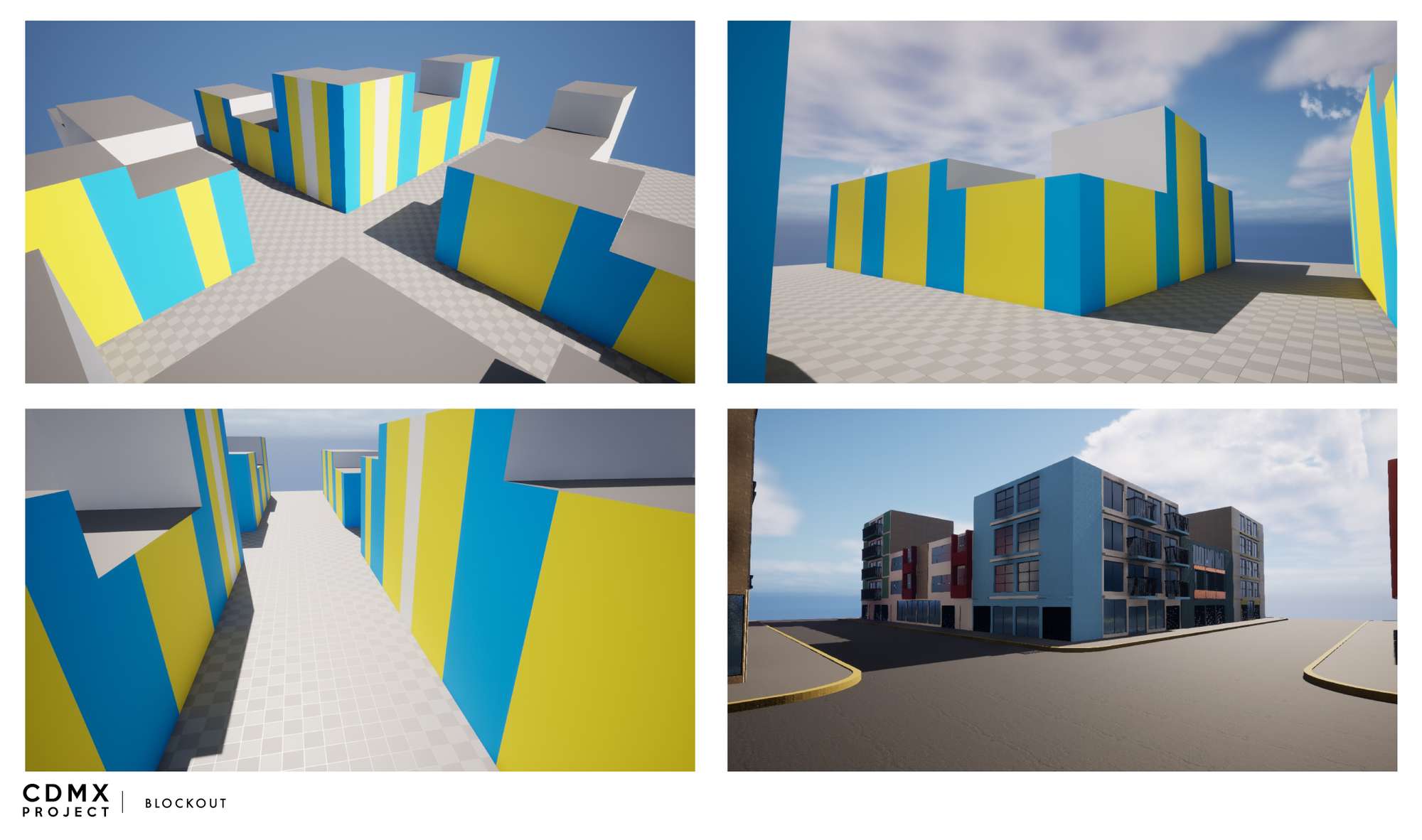
Lighting and Atmosphere
- Lumen: Utilized for dynamic global illumination that reacts accurately to the sunset’s solar angle and reflections, creating a lifelike urban environment.
- Color Palette: Focused on warm oranges, ochres, and cool blue shadows to emphasize the urban contrast at sunset, mimicking the tones of an autumn day.
- Volumetric Effects: Soft volumetric fog was implemented to enhance the warm, end-of-day atmosphere.
- Street Lighting: Street lamps and randomized window lighting from buildings were used to create a realistic depiction of a Mexico City neighborhood.
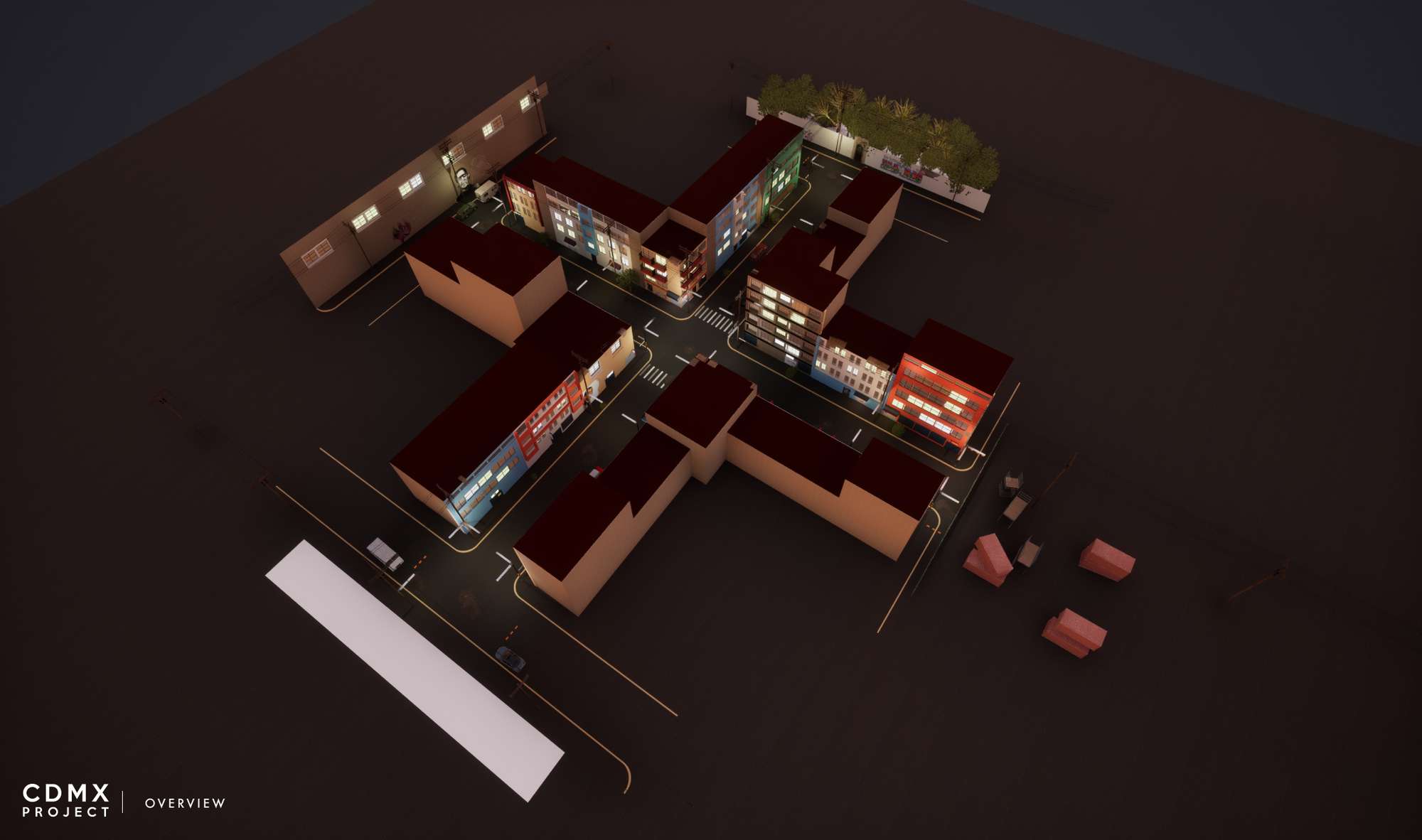
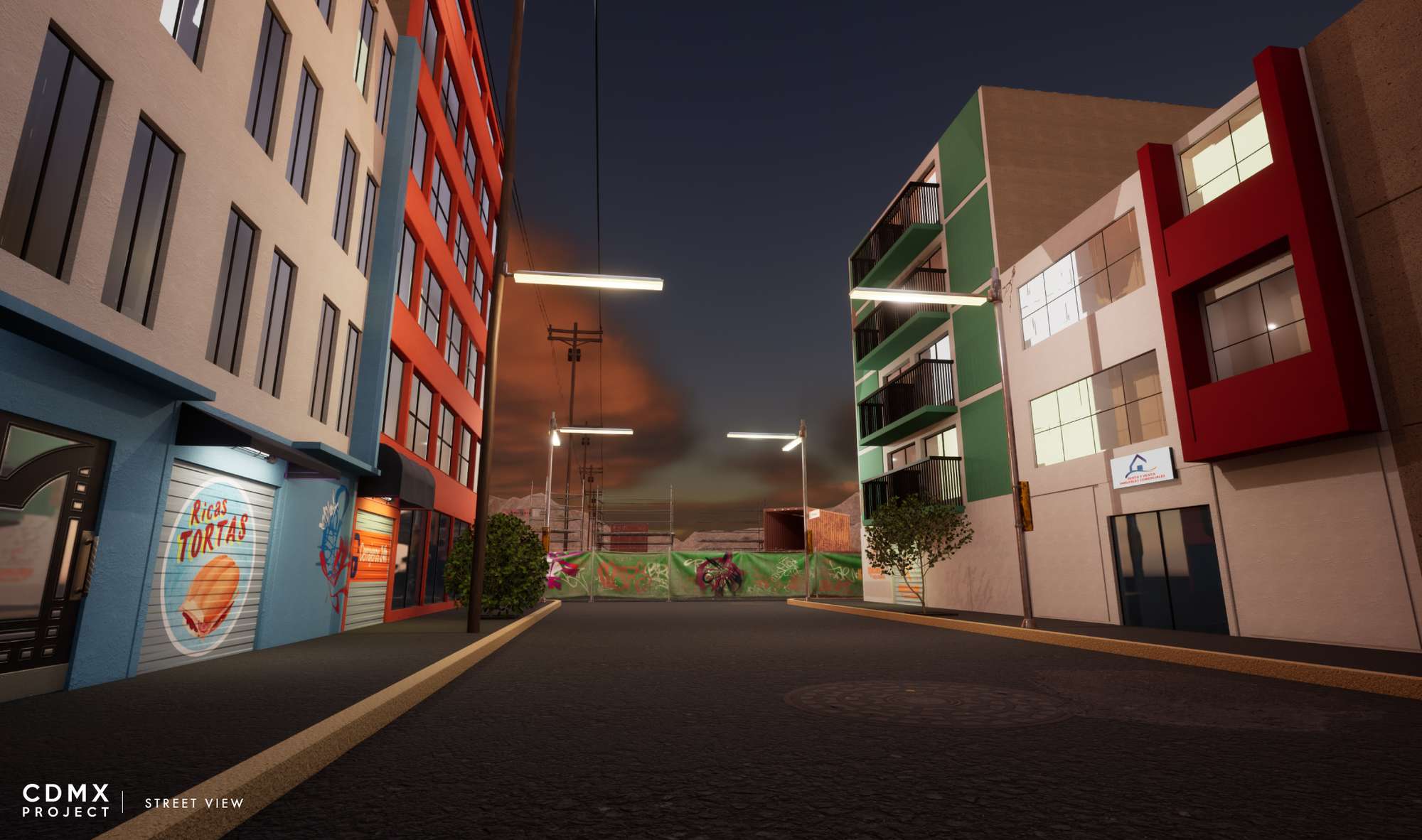
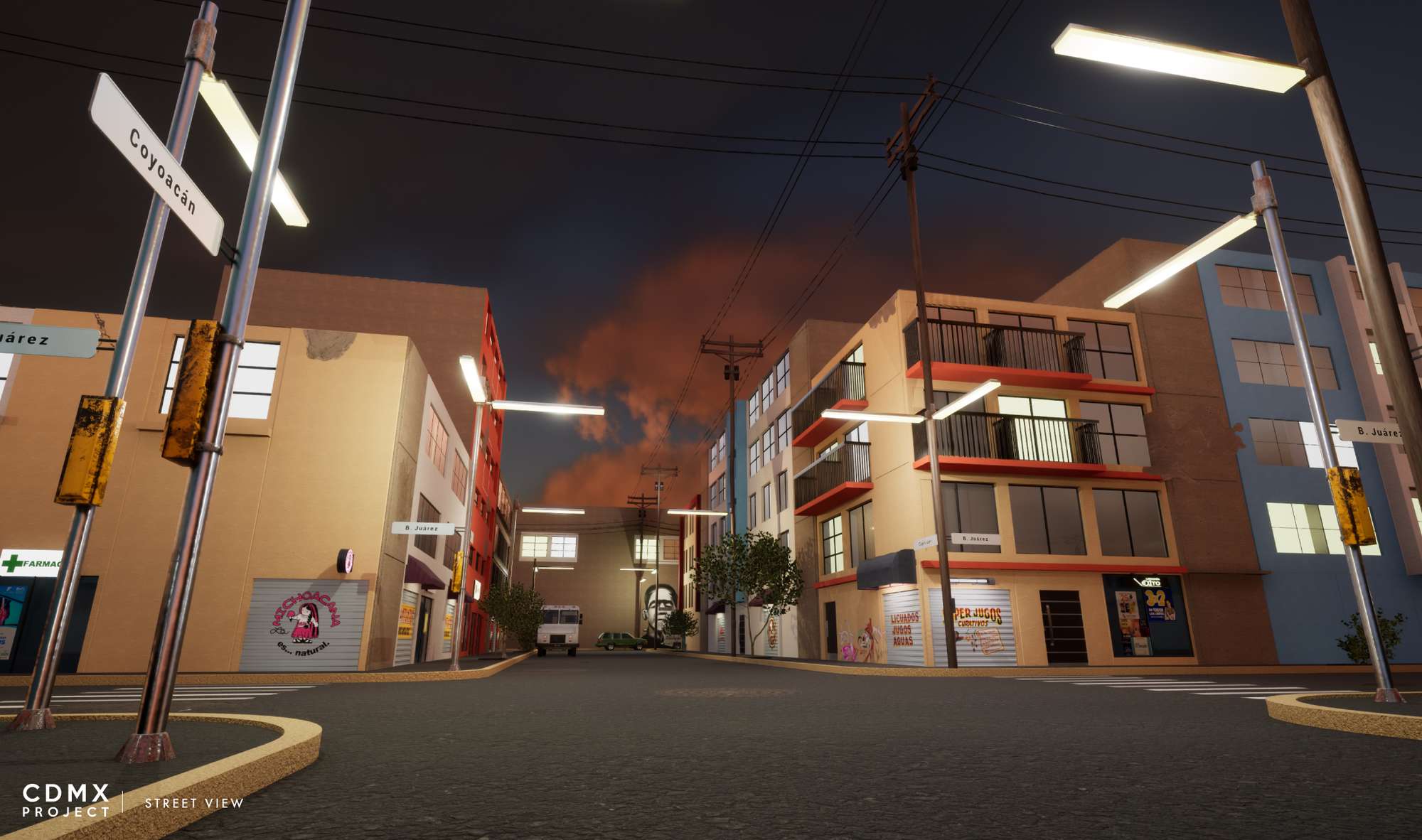
Finishing Touches:
To enhance the sense of realism and narrative within the environment, I added custom graffiti assets as part of the final detailing phase.
Each graffiti element was painted manually in virtual reality using my Oculus headset, the graffiti was then optimized and integrated into the scene as projected decals and texture maps, maintaining visual consistency while preserving performance across the environment.
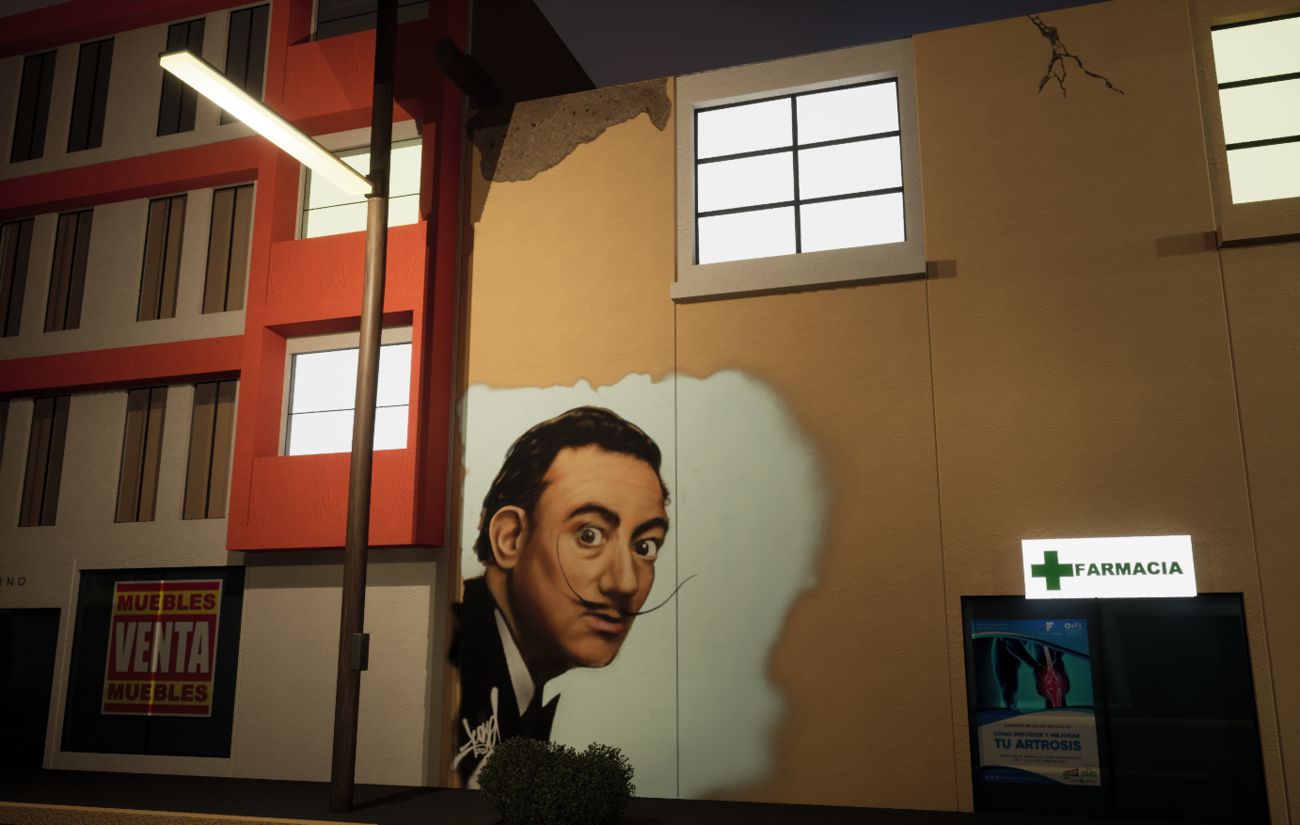
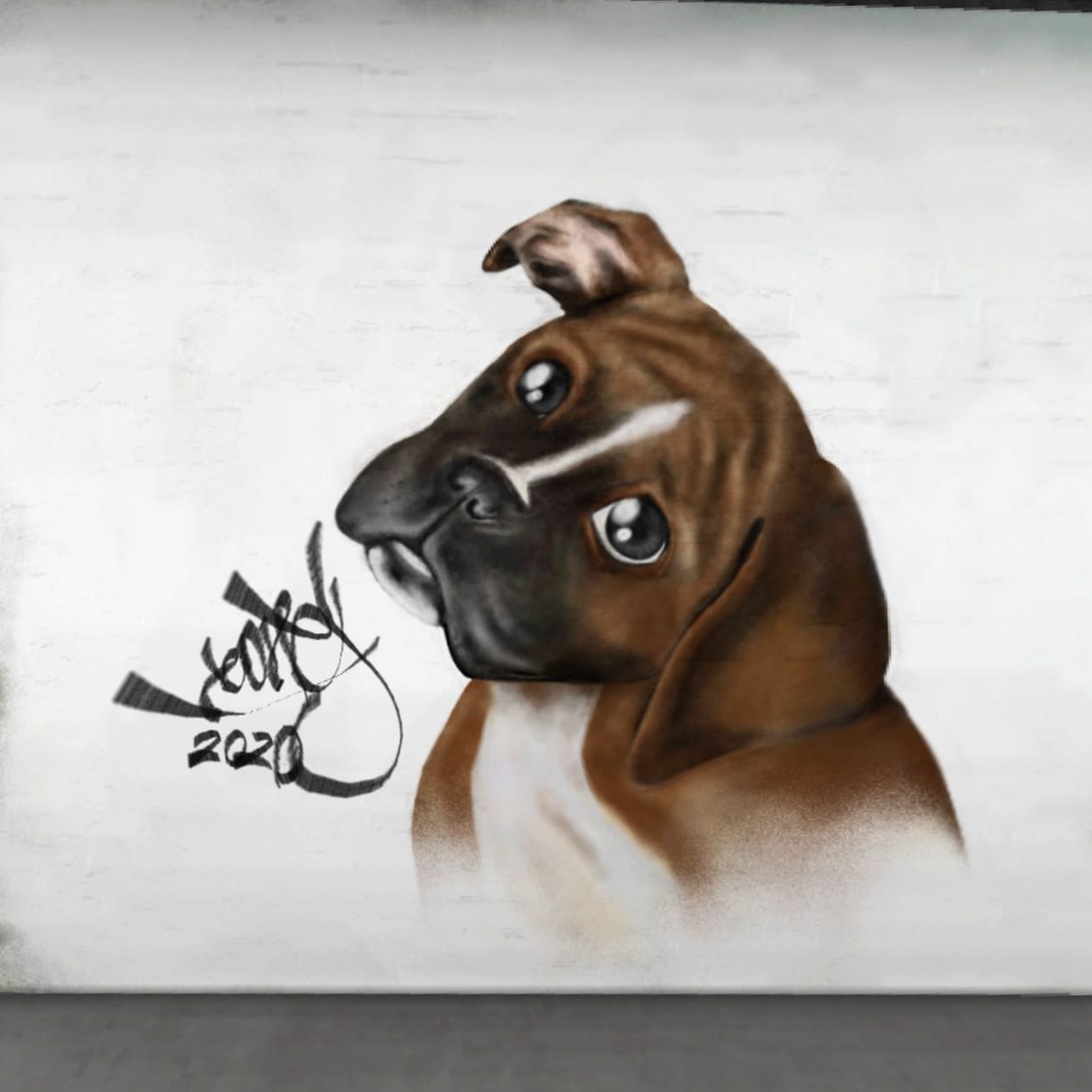
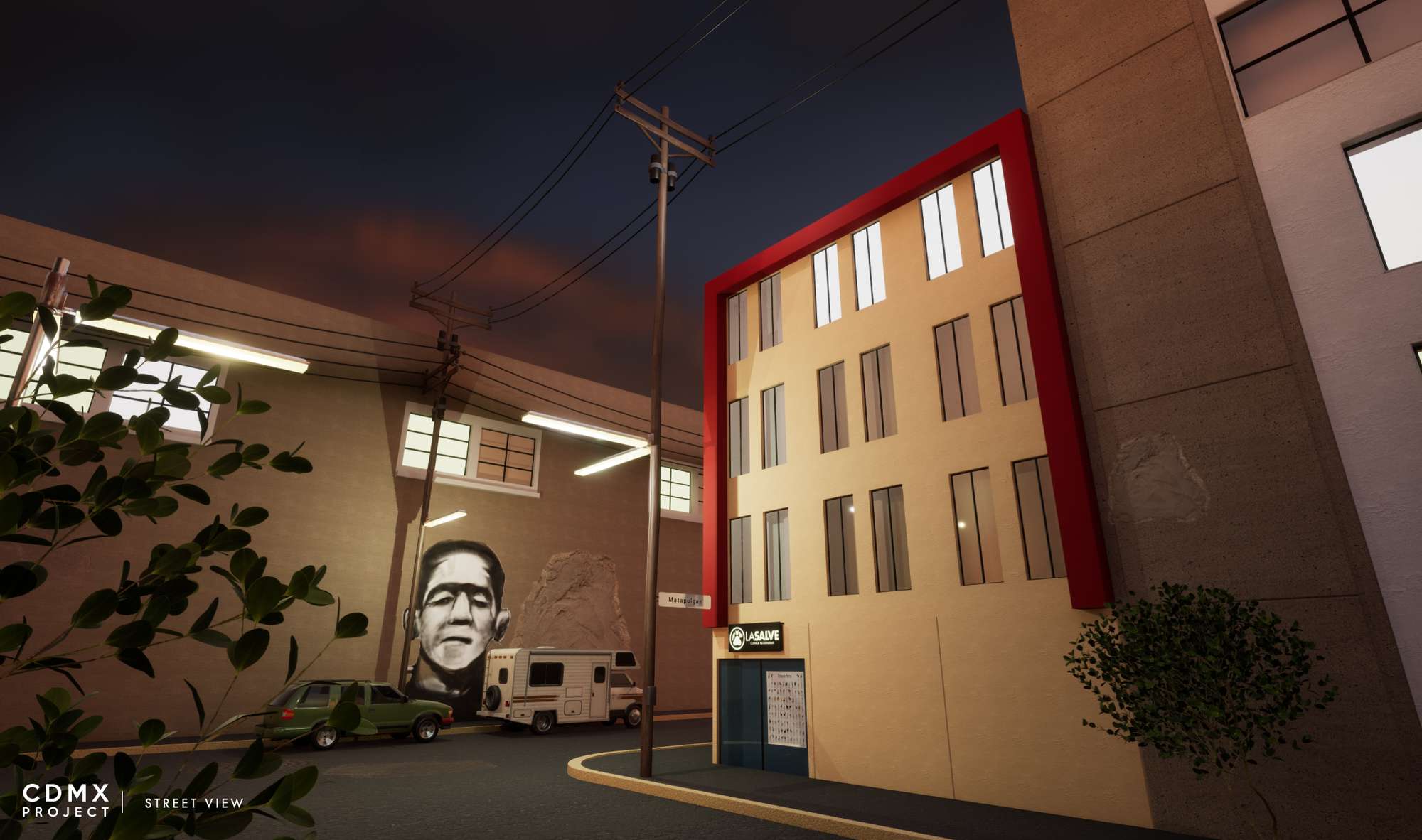
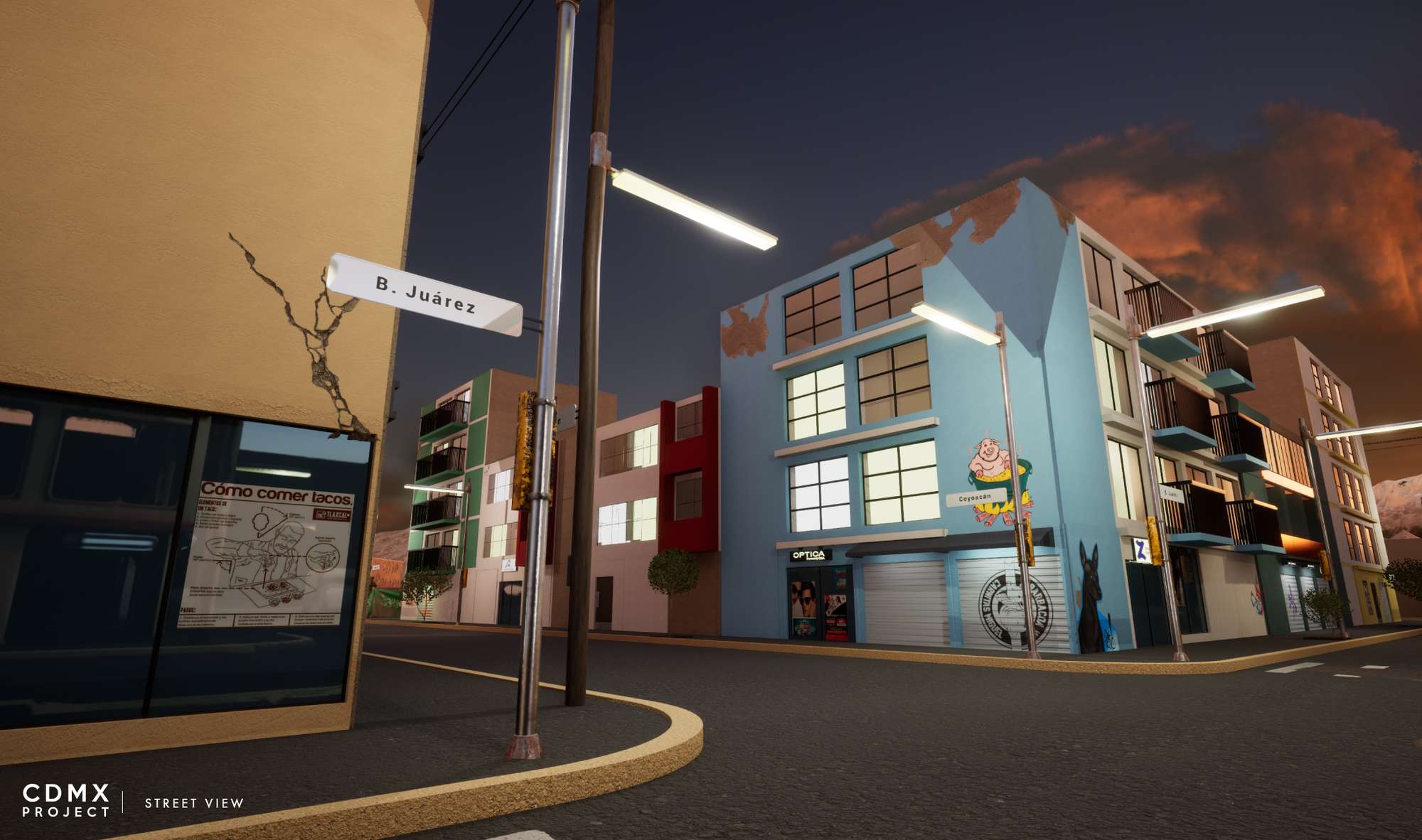
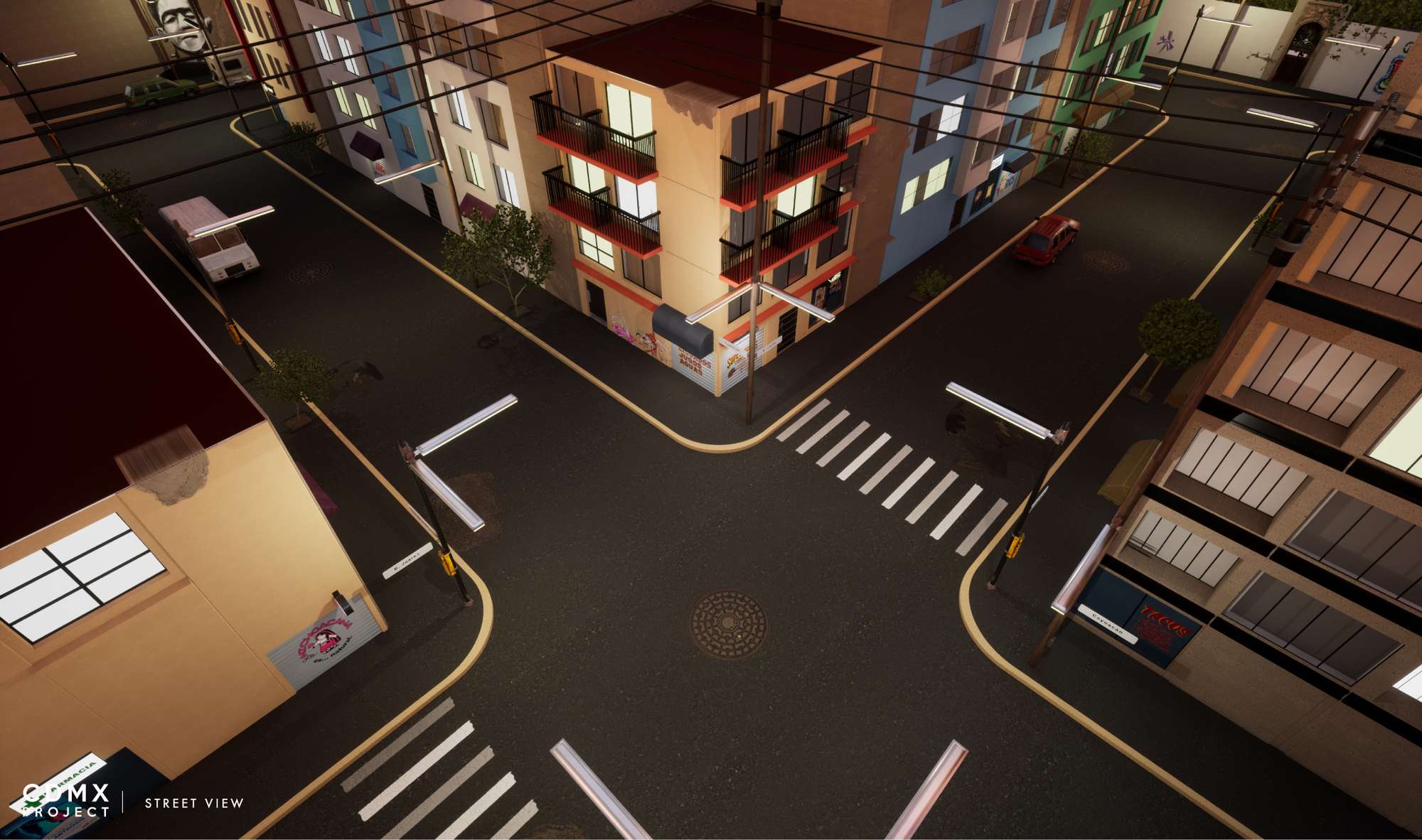
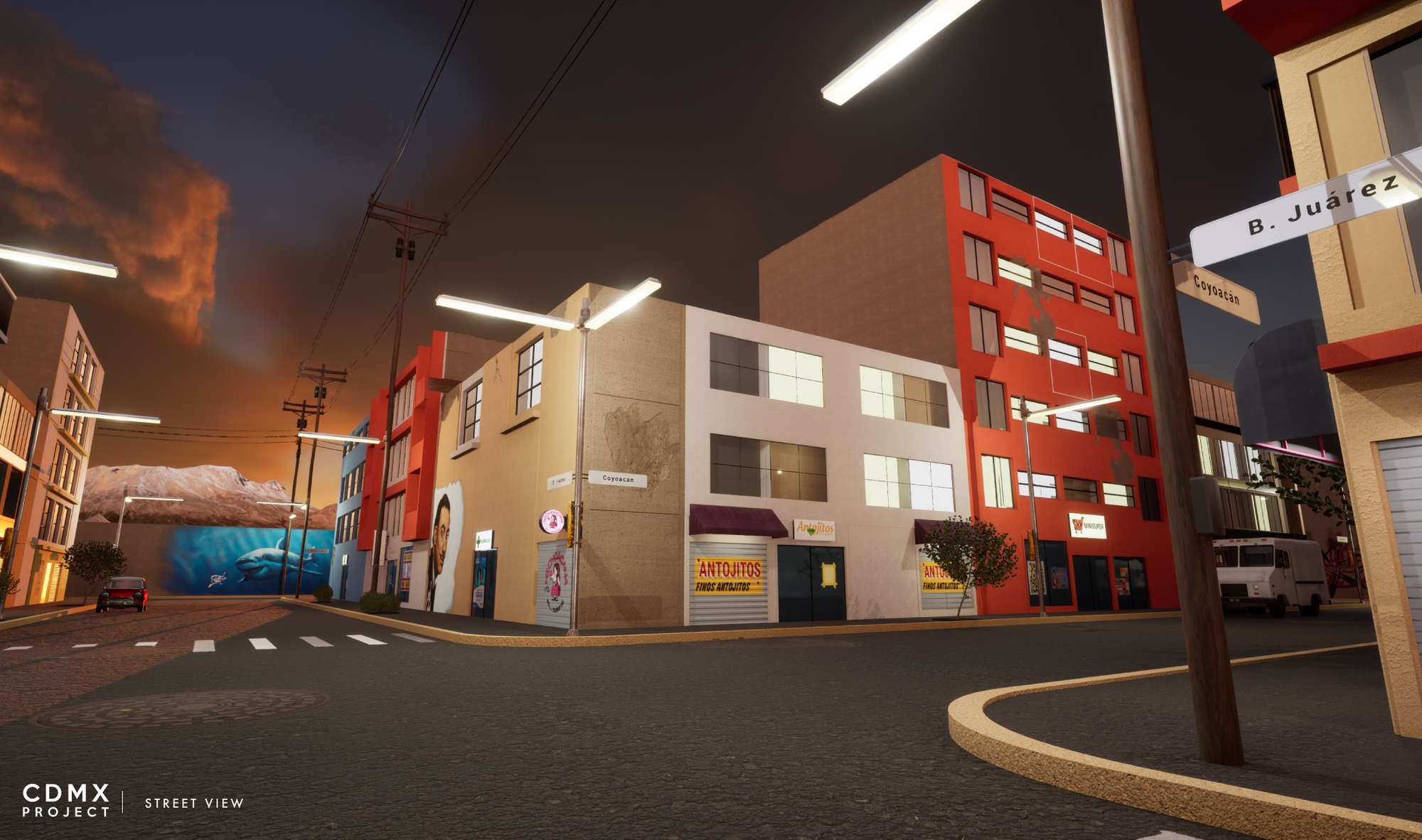
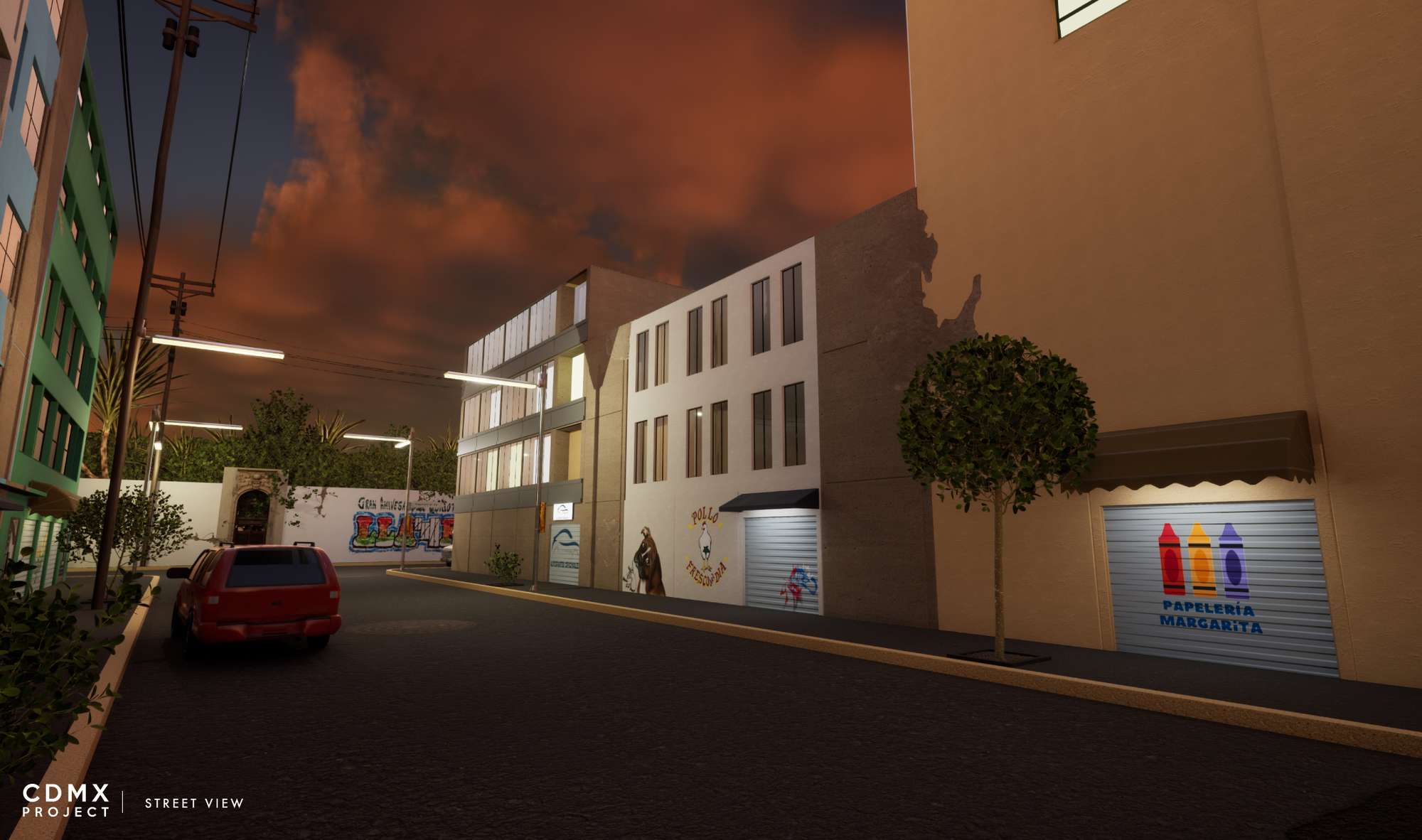
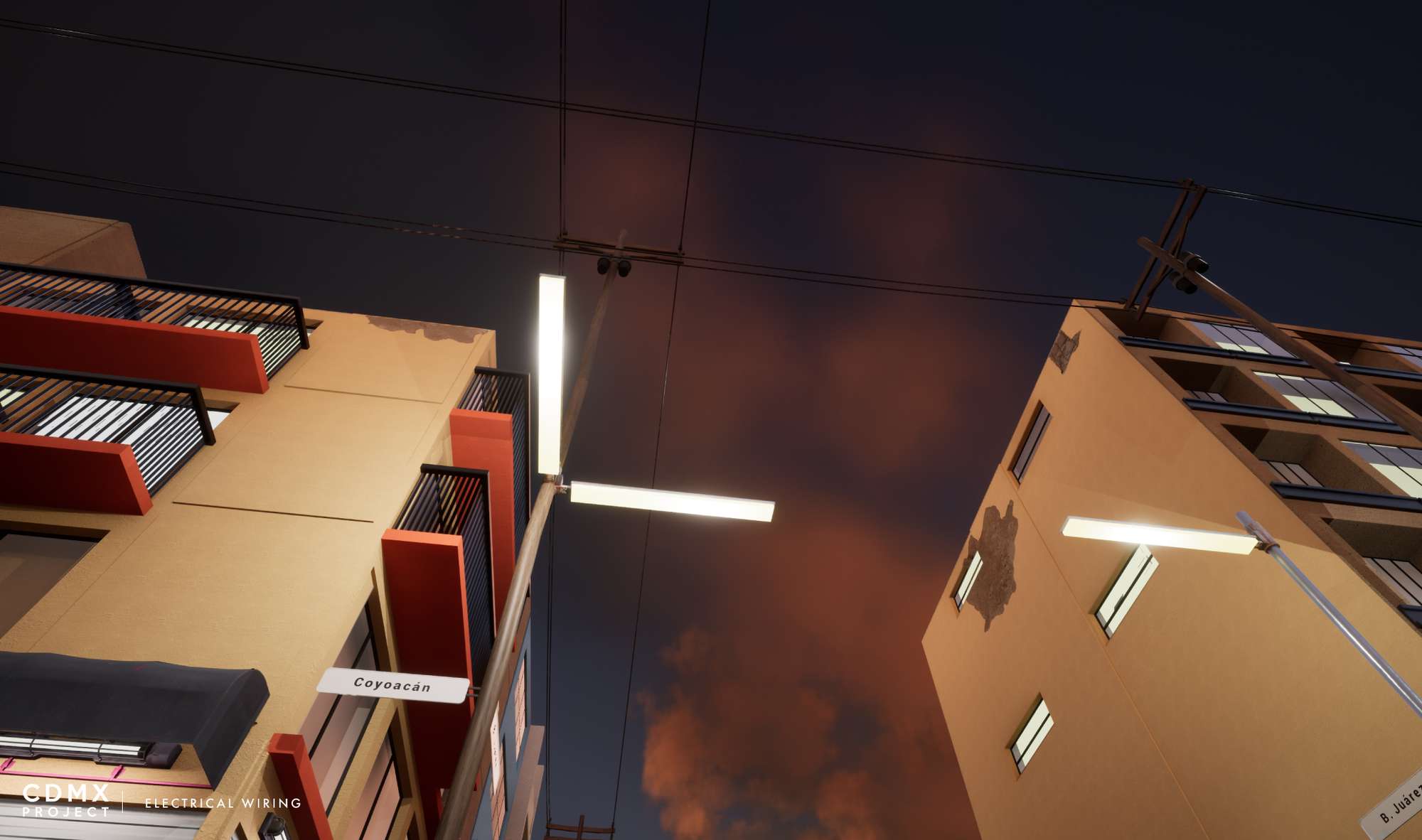
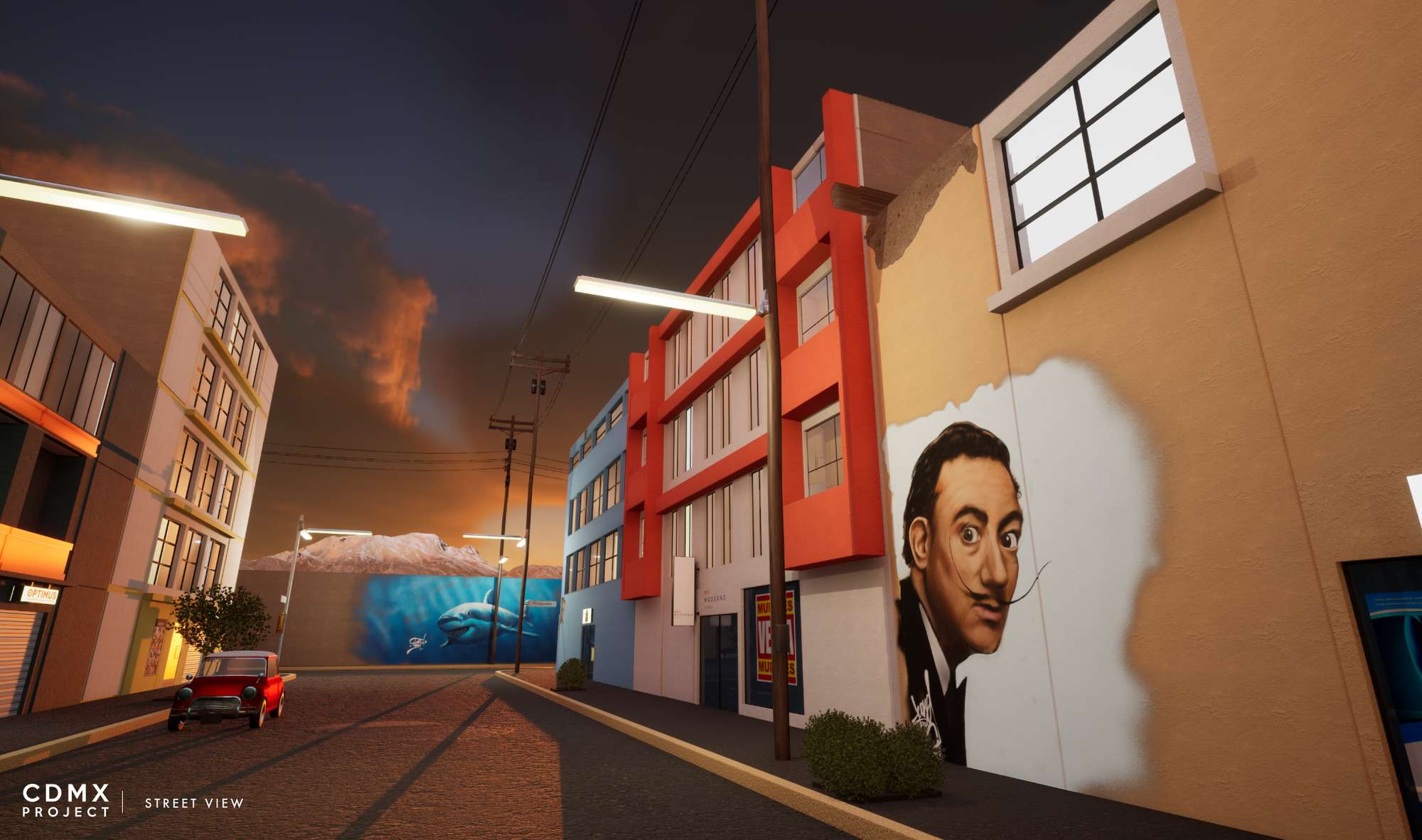
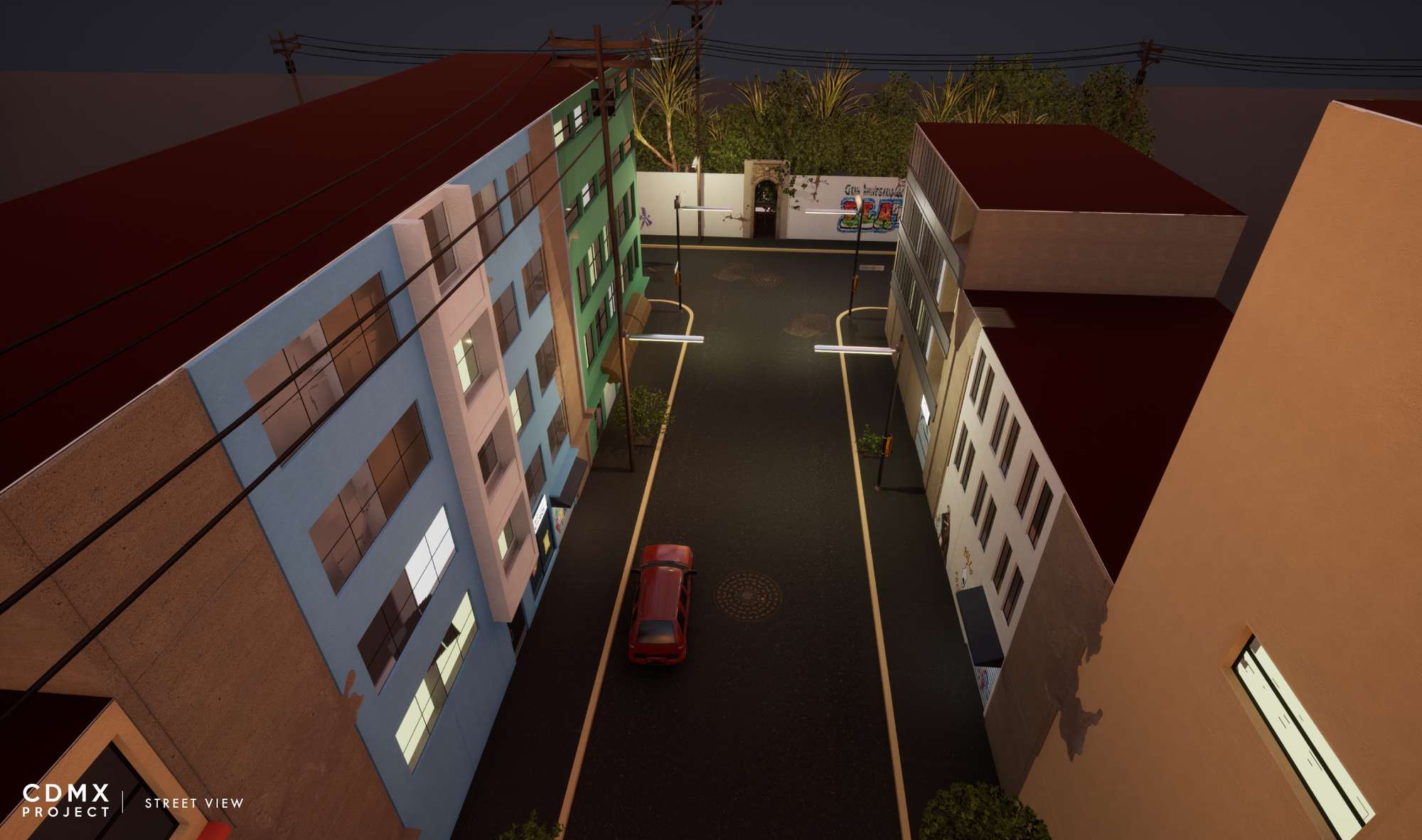
Challenges and Solutions
-
Challenge: Creating a large-scale city without sacrificing performance.
-
Solution: Leveraged instancing and block-based culling to maintain efficiency.
-
-
Challenge: Avoiding repetitive asset patterns.
-
Solution: Combined material variations, vertex painting, and decal layering for diverse visuals
.
-
Key Learnings
- Deepened expertise in creating visual tools with Blueprints.
- Reinforced principles of modularity and system design.
- Gained a better understanding of how lighting impacts spatial storytelling.
Performance
- Modular assets and optimized lightmaps ensure scalable performance even in dense environments.
- The environment is designed to support the dynamic initialization of a large number of modular buildings, enabling layout flexibility while maintaining real-time performance.
- Efficient use of Nanite for high-density meshes where needed.